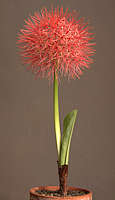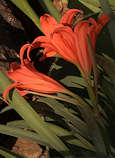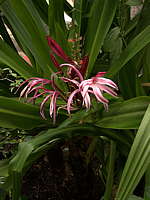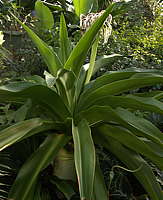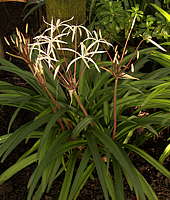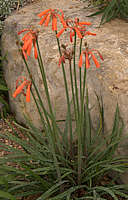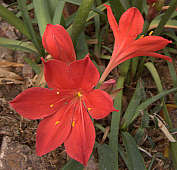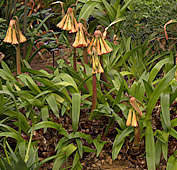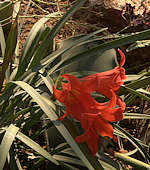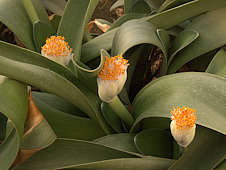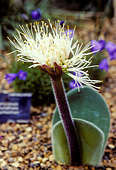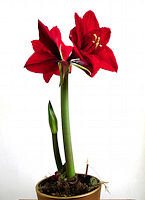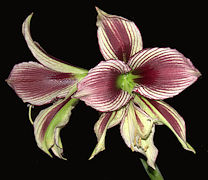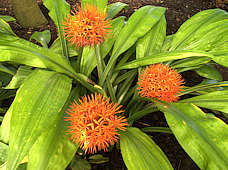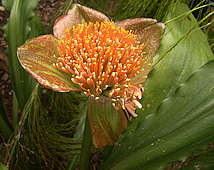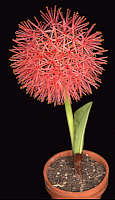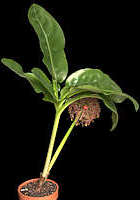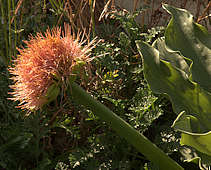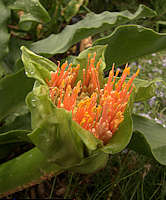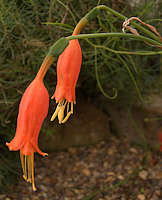Amaryllidaceae Jaume Saint-Hilaire 1805The Amaryllidaceae is a family of about 870 species in around 50 genera of bulbous or rhizomatous (Clivia, Cryptostephanus and Scadoxus) perennial herbs, with alternate strap-shaped leaves which may be semi-succulent. The bulbs and rhyzomes may also be thought of as succulent storage organs, enabling these plants to survive dry seasons. Species are found throughout the tropical and sub-tropical parts of the world including Australia (3 genera), Mediterranean (8 genera) South America (28 genera), South Africa (18 genera). In Southern Africa, the bulbs often sit on the surface rather than below it, but species that grow with sub-surface bulbs maintain them at a proper depth with contractile roots.
|
Amaryllis Linnaeus 1753
|
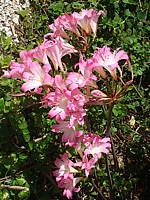
Amaryllis belladonna Linnaeus 1753 (Naked Ladies)
|
Boophane Herbert 1821 (Oxbane)is a small genus including five species of large bulbs from which arises a short stem with a dense head of many flowers. The fans of grey-green strap-like leaves are usually produced after flowering. The large seed heads break off at the top of the flower stem and driven by the wind, roll across the landscape distributing the seeds.
|
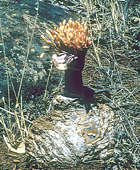 |
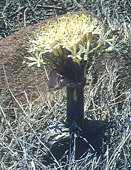 |
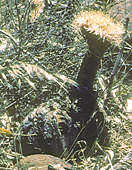 |
|
Above: Boophane haemanthoides Leighton 1947 |
|||
Clivia Lindley 1828 (Bush Lilies)
|
|||
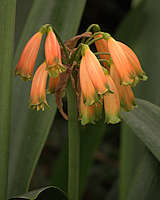 |
Clivia gardenii Hooker 1856 (Major Garden's Clivia) |
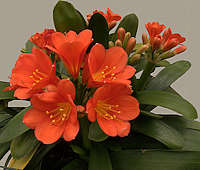 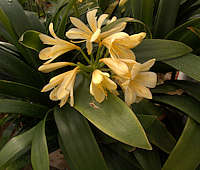 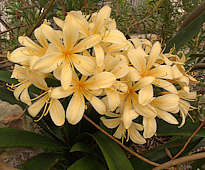 |
Clivia miniata Regel 1864 (Bush Lily, Boslelie) |
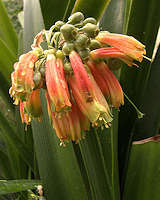 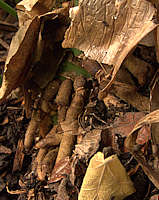
|
Clivia nobilis Lindley 1828 (Kafir Lily) |





